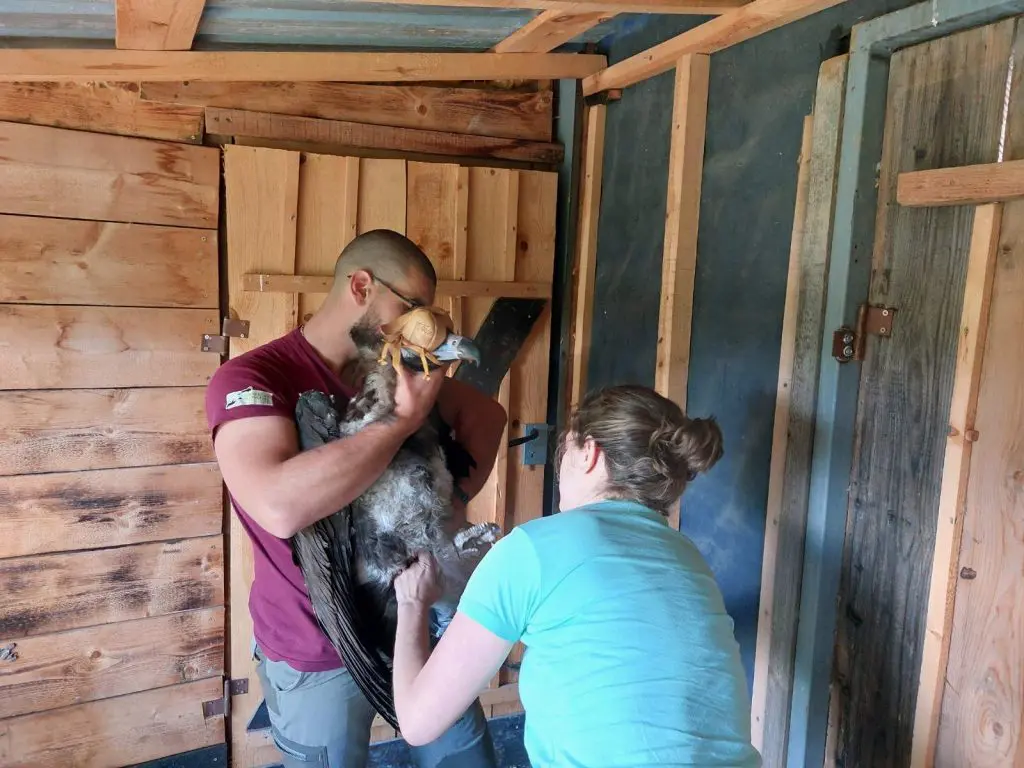Cinereous vultures are scarce winter visitors or passage migrants in the middle east. Some time ago we have reported the story of a juvenile cinereous vulture who was founded stranded and weakened in Jordan. Thanks to the efforts of the the Royal Society for the Conservation of Nature (RSCN) – Jordan, this bird could be rehabilitated back to the wild.
A few months ago (November 2017), this bird was final re-released back to nature, this time equipped with a GPS tag provided by the VCG, with generous funding from a MAVA project on vulture monitoring across the Mediterranean.
The bird was released in the Dana Biosphere Reserve, and after spending 1 week in the area, it moved swiftly south, and flew about 300 Kms in 6 days. It entered Saudi Arabia and settled close to Tabuk – a town in North-western Saudi Arabia (see map above). Since the end of November, this juvenile bird commutes between a mountain ridge and the plains where there are some intensive agricultural lots. Local experts expect this bird to follow the Sarawat mountain chain further south to reach protected areas where other vultures occur – but the bird could also move north in Spring to the breeding area where it was hatched.
The GPS tag is providing us valuable data on the foraging habits of this species in this area of the middle east, and is helping us identify key habitats and locations for vultures there. Should something happen to this or any other tagged vulture, it will also allow us to identify the precise causes of death, and thus act immediately and mitigate them for the future. This is also important to help direct resources and identify priorities for the implementation of the vulture Multi-species Action Plan, a global vulture conservation plan in Europe, Africa, Asia and the Middle East co-coordinated by the VCF.
You can see the movements of this bird and of other tagged vultures here>>











